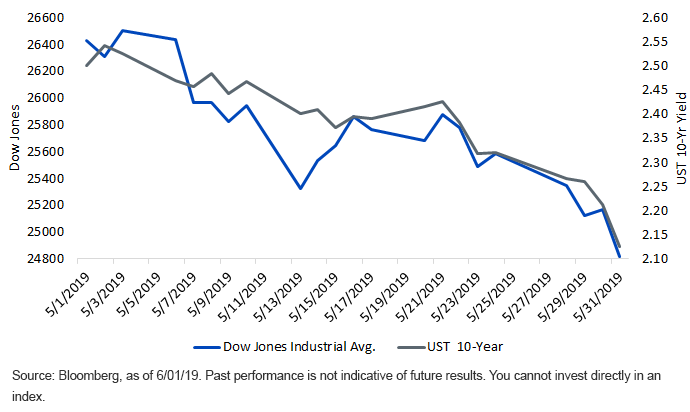Which Came First—the Chicken or the Egg?


A funny thing happened one day last week when I walked into the office. No, this is not the setup for some joke; rather, I’m referring to what I heard regarding movement in the stock and bond markets. Specifically, the narrative was that the decline in U.S. equities resulted from the drop in the U.S. Treasury (UST) 10-Year yield. Because I’ve been a “bond guy” for quite some time now, the rhetoric was fascinating to me and brought to mind this age-old question: Which came first—the chicken or the egg?
In my experience, the bond market typically reacts to developments in the stock market, not the other way around. Being a baby boomer (right at the tail end, mind you), I thought: Am I missing something here? Could the paradigm have shifted? Thus, I decided to do a little bit more investigating, and what I found was that, in my opinion, no, the paradigm had not shifted. The recent decline in the UST 10-Year yield had its genesis in the latest sell-off in the stock market, which began in early May and continued throughout the month.
Dow Jones Industrial Avg. vs. UST 10-Year Yield

Take a look at the graph. The UST 10-Year yield was essentially straddling the 2.50% threshold in the opening days of May until the Dow Joes Industrial Average (DJIA) took a nearly 475-point nosedive on May 7. This began the downward trend in which we find ourselves now. Remember, that trend was in response to the breakdown in U.S./China trade talks and the attendant escalation in “tariff talk.” Then round 2 hit as the DJIA plunged 617 points on May 13, leading the UST 10-Year to break through the 2.40% level, ultimately falling down to 2.37%—which, at that time, matched the 2019 low watermark set back in March. Notice how stocks rebounded somewhat after this episode—and what did the 10-Year yield do? That’s right, it moved back up as a result.
Then round 3, or the 286-point drop in the Dow on May 23, which took the UST 10-Year down to 2.32%, ultimately penetrating a key technical level soon thereafter. That brings us to where we were as of this writing: a cumulative 1,600-point plunge in the Dow and a nearly 40 basis point drop in the UST 10-Year yield to 2.12%.
Conclusion
During May, there is no doubt the bond market received some softer-than-expected economic data. However, the data stream overall was mixed (strong jobs), and did not point toward a likely recession anytime soon. We all know that trades and tariffs are a wild card right now, and the upcoming G20 summit in late June will be scrutinized for any thawing in the U.S./China dispute (and throw Mexico into the mix as well). Until the fear and uncertainty quotients get dialed back and the stock market can stabilize (hopefully, not a big “if”), the Treasury market will more than likely continue to take its cue from the “risk-off” trade. That being said, don’t lose sight of the upcoming jobs report and Federal Reserve meeting later this month.
Unless otherwise stated, data source is Bloomberg as of June 1, 2019.


